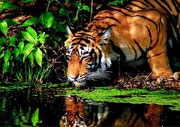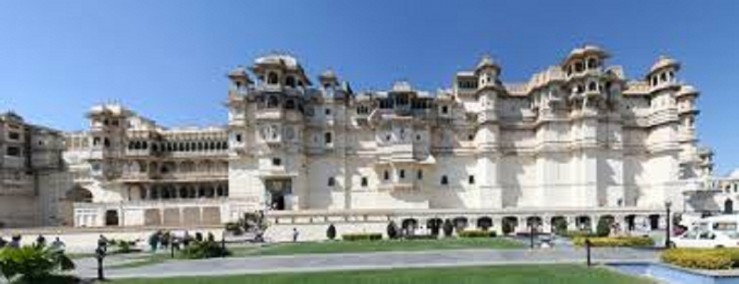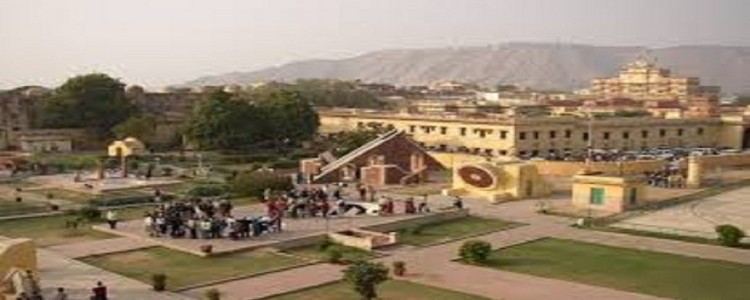Rajasthan



Rajasthan in fact has a varied topography that includes semi arid and desert land, the heavily forested world’s oldest Aravali hills and the shallow wetlands. The natural splendour of Rajasthan includes a wide spectrum of wild life habituating this land ranging from tigers and leopard to antelopes and gazelles and reptiles to an abundance of bird life. Some of the terrains were once the hunting preserves of the kings of Rajasthan, now these special habitants are protected by the law.
Flora
Forests mostly confined to the east of the Aravali range constitute just about 9 percent of the total area of the state. Vegetation in the desert region is limited to very slow growing stunted trees, thorny shrubs and some grasses. The other natural vegetation type in Rajasthan is ephemeral, occurring only during the monsoon season. The Ker fruit is also eaten as vegetable and it has strong and durable wood.
The shallow wetlands of eastern Rajasthan are dotted by shrubs, creeper, bushes and herbs. Common trees found in the Keoladeo National Park include Babul and Khejri. The Ranthambhore National Park has about 75 tree species. Trees found in the hilly area of Mount Abu include Salar, Bamboo, Dhav, Mango and Jamun. Some of the plant species are rare including 3 species of wild roses, 16 species of ferns and two species of orchids. Close to Jaipur, the area is abundant with Dhav and plant species like Solar, Thor, Godal, Guggal, Brahmi, Shatawari and Adusa.
Fauna
The faunal wealth of the Rajasthan presents a vivid spectrum ranging from mammals and reptiles to bird life. Antelopes and gazelles are found in most of the regions of Rajasthan. Kala hiran prominently inhabits the Jodhpur region and the small herds of chinkara are found in the sandy deserts. The robust Nilgai is spotted frequently on open plains and in the foot hills of the Aravalis. Of the deer family, sambar and the chital is found in forests interspersed with patchy open meadows. Termed as an endangered species, tigers are now in the protection of national parks in Ranthambhore and Sariska.
The wild boar whose hunt was once the favourite leisure activity of the Maharajas of Rajasthan is found around Mount Abu. Sloth bear can be seen, though rarely, in the deciduous forests of Ranthambhore. Rajasthan has not only nearly extinct water birds migrating from Siberia (over 6000 km) but also from the south of the Himalayas. The Keoladeo National Park in Bharatpur at one time hosted about 375 bird species and of great interest is the world’s tallest black necked stork standing up to 1.8 m tall and its black and white wings span up to 2.5 m. Hordes of demoiselle cranes can be sighted at Chechen and Sambhar. The rare Indian bustard and the grey partridge are the birds of open scrub forests of Rajasthan.
Ranthambhore National Park
Once the hunting reserve of the Maharajas of Jaipur, the sanctuary became a tiger reserve in 1972. Ranthambhore is on the world map as the most picturesque place to see the most famous predator tiger. The national park encompasses an area of 392.5 sq km in Rajasthan running from the eastern most spur of the Aravalis to the Vindhya Range. This is where the elusive tiger can be viewed roaming about. The current population of tigers in the park is estimated at 40. The other predator the leopard also lives in this unique habitat of dry deciduous forests generally sighted on the tops of cliffs that rise above the entrance to the park. Other predators here include the jungle cat, the caracal and the jackal.
The sanctuary has grassland and lake side woods providing natural habitat for herds of chital, deer, sambar and wild boar. The nilgai antelope and chinkara gazelles can be seen in the drier areas of the park. Crocodiles can be found basking by the lakes and some ponds have fresh water turtles. Because of its aquatic habitat, Ranthambhore also supports a wide variety of birdlife. Some 250 species of birds including some migratory birds are drawn here by the wide variety of flora and the placid water lakes of Rajbagh, Milak Talab and Padam Talab. Birds include owl, quail, partridge, stork, spoonbill and eagles.
Sariska Tiger Reserve
Once the personal hunting ground of the Maharaja of Alwar it was established as a sanctuary in 1958 and in 1979 was taken up under the Project Tiger. It covers an area of 765 sq. km. dominated by sharp cliffs and narrow valleys of the Aravalis. The chau singha or four horned antelope, chital and sambar are commonly found here. The reserve also has a rich variety of birds including pea fowl, jungle fowl, spur fowl, grey partridge, babblers, bulbuls, tree pies, blue breasted quail and golden backed wood pecker etc.
Keoladeo Ghana National Park
Once the royal hunting reserve of the princely family of Bharatpur, today it is a reserved sanctuary habituating a variety of birds. It has been designated a World Heritage Site. It is however unfortunate that the virtual drying of most of the water holes inside the sanctuary due to successive monsoon failures has resulted in fewer birds. Efforts are on to solve the problem and protect the marshlands.
The rich aquatic plant and animal life in the lowlands holding water is an ageless avian paradise for resident and migratory birds. Till recently in good times Keoladeo Ghana hosted 400 bird species of which 120 species nest here. Exotic migratory birds from Siberia, Central Asia and China were regular visitors – the most closely associated with the park being the Siberian crane. Storks and cranes are the highlight of the park. Other notable species of birds found here are spoonbills and ibises, heron, egret, large pelicans, kingfisher, geese and ducks. There are eagles, vultures, owls, harriers, falcon, reed warbler, shrikes, and golden oriole pigeon. The park also has species of animals such as chital, blackbuck, sambhar, and wildboar, various species of cats, mongoose, porcupine, hare, squirrels and pythons.
Desert National Park
45 km southwest of Jaisalmer the landscape is dominated by shifting sand-dunes and scrub. The Park was created to protect the Thar Desert, the habitat for drought resistant endangered and rare species of flora which have adjusted to the unique and inhospitable conditions of extreme temperatures. The trees found are mostly leafless and throng and often have very long roots. The 3000 sq. km. protected area with vast tracts of desert sands supports spiny tail lizard, desert monitors, sand fish that ‘swim’ under the sand, chameleons and deadly viper and Sind krait. The other faunal species found here are desert hare, hedgehog, Indian wolf, desert fox and gerbil.
The bird variety that can be viewed here include species of sand grouse, grey partridge, quails, peafowl, bee-eaters, shrikes, orioles, drongo, warblers and babblers.
Tal Chapar Wildlife Sanctuary
90 km from Churu is Tal Chapar Wildlife Sanctuary covering 71 sq km of area with ponds and salt flats. It is home to largest herds of blackbuck antelope in India besides chinkara, desert fox and desert cat can also be seen here. During the winter months huge flocks of demoiselle and common cranes can be sighted at nearby wetlands along with partridge, sand grouse and desert courser. The best time to visit the park is between September-March.






